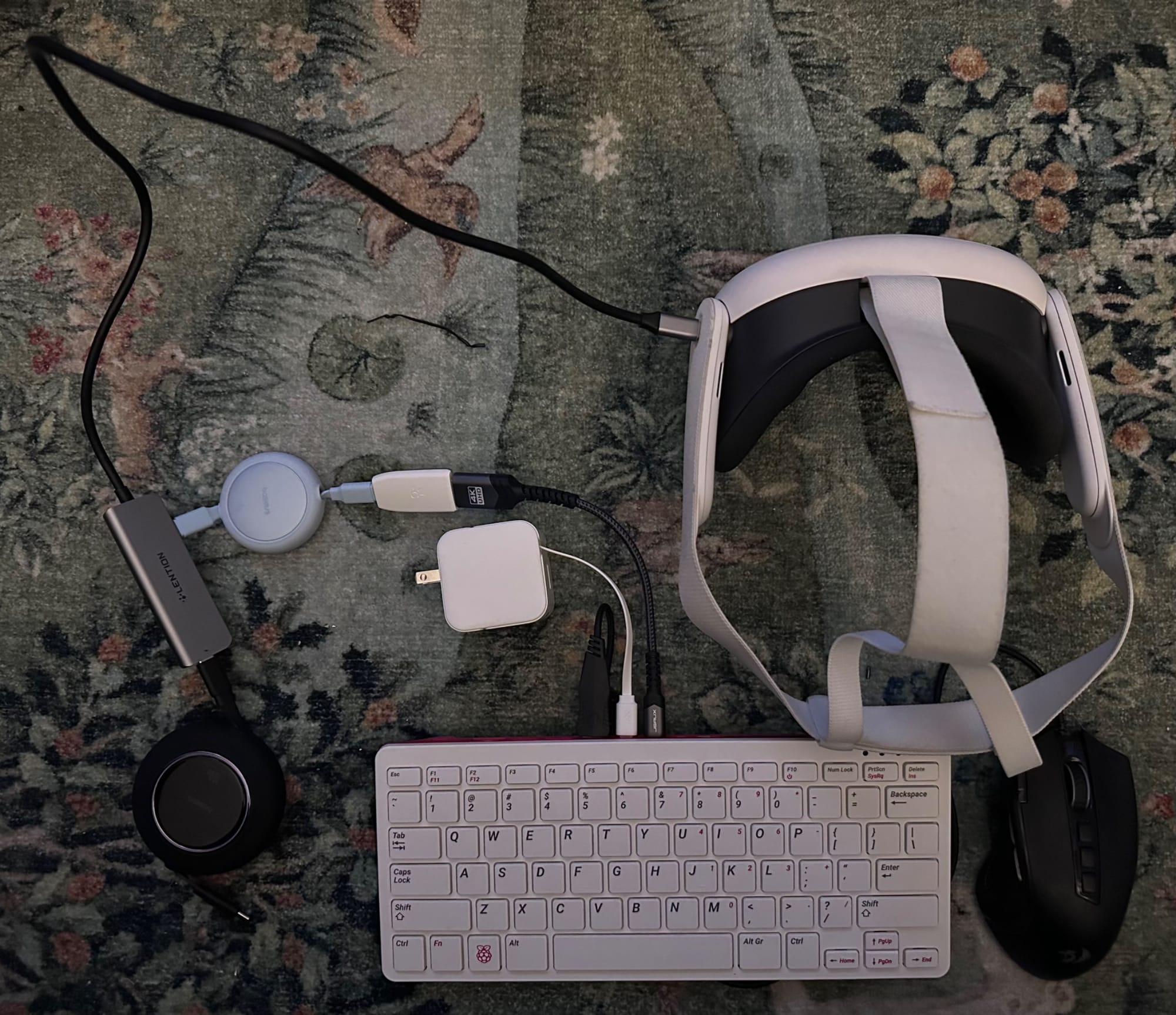The keyboard PC features a pair of Micro HDMI ports for display, a USB-C port for power in and three USB-A ports to attach devices. The keyboard PC features a pair of Micro HDMI ports for display, a USB-C port for power in and three USB-A ports for attached devices.
Paired with a VR headset like Quest 3, I’ve used retractable USB-C cables to make the connections more manageable between keyboard, power, and headset. A micro HDMI to HDMI converter and Shadowcast 2 capture cards complete the setup. The Retropie system would run backups from my old cartridge collection. I could swap the card to replace my desktop, which had draft stories written in VR. You can do all of this with the Steam Deck, and even more, with the
that I discussed last week. You can enjoy all those great Steam Deck-verified titles on the big screen there, and the Discover app on Steam Deck’s desktop is an easy-to-use pathway to many abilities the open source community adds on an ongoing basis.
If you were born after the year 2000, there’s a chance you’ve only ever known the kind of file management allowed in wiggling apps on an iPhone, or in the automatically tracked changes of Google Docs, or in the reminders to delete photos or videos from a device with limited storage.
Raspberry Pi used like this offers an introductory course to the basics of personal computing starting from an open source Linux operating system you put on a microSD card in a keyboard PC, and sees you extending the desktop it shows to a 1080p display that just happens to be a VR headset.

Keyboard PCs For VR Headsets & AR Glassesdecktop keyboardAn optimized keyboard PC with integrated capture cards would be a pretty amazing addition to a standalone VR headset. The keyboard PC could include at least two HDMI ports, one HDMI in and the other HDMI out, which would allow it to connect to any display connected to the computer. This would include Quest 3 and Meta Quest HDMI Link. It should only take a few clicks to switch between the VR headset and the desktop of the keyboard computer, or even a HDMI device like the Steam Deck docked on the charging station. The Raspberry Pi 400, which is as old as the Quest 2, has three USB-A ports and 4 gigabytes of RAM. A Raspberry Pi 500, a hypothetical model built onto the latest computer, could make this idea even more powerful with an integrated slot that supports high-speed HDMI
.
HTC headsets have been using HDMI for some time. But with the recent updates of Meta’s Horizon OS, and applications like Quest HDMI Link or Steam Link on the older model, Quest VR headsets can now be used as portable computers. Users are already using the integrated display system to control
,
, as well as other computers in the immediate vicinity,
.
Keyboard PCs show a lot of potential when combined with the expected lower prices on a forthcoming
, as well as the prospect of more software updates planned by Meta to keep pace with Apple and others. You can use Keyboard PCs to bring files from your computer onto any device. When you combine this idea with standalone VR headsets that are general-purpose, it is easier to envision people wearing headsets at places such as cafes and libraries.